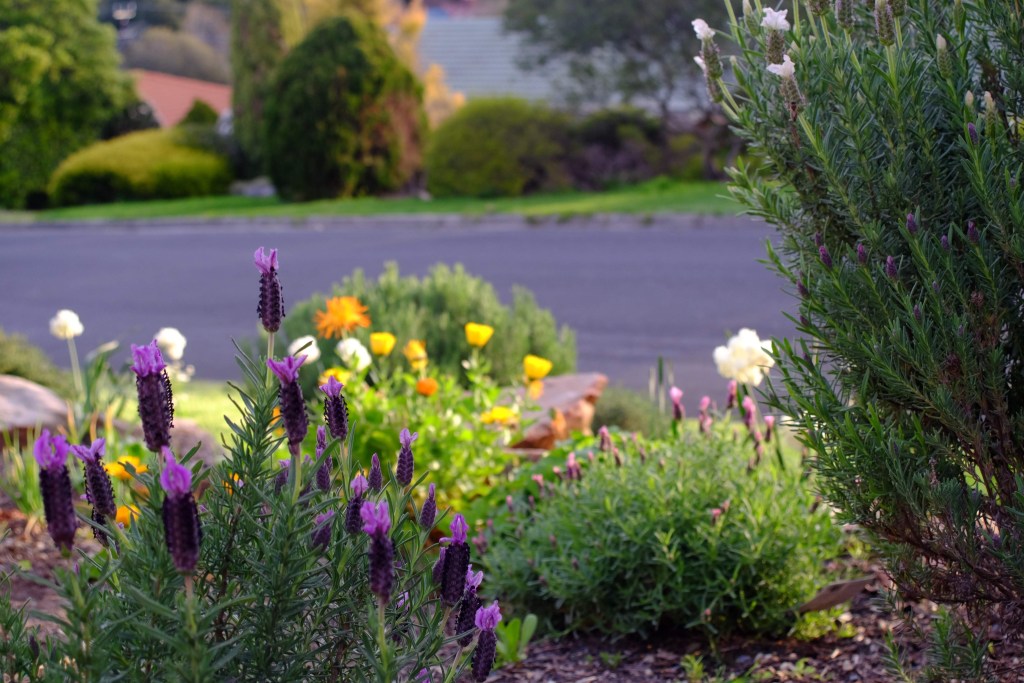I’m a vegetarian, and although my partner and young adult living at home are not technically, they are in actuality, because I do most of the cooking.
We are not vegans, because I have severe, life-threatening allergies that prevent me from being a healthy vegan. Our happy chickens produce eggs, and we eat dairy products. I don’t enforce my dietary choices on the rest of the family – they can eat what they like – but at home for the most part, we are a veggie family.
This means that how I garden has changed quite a lot. In the past, I was a bit more haphazard about what I planted. I often planted things for fun and interest rather than what we needed. Now I plant more intentionally, thinking about the plants that supplement a healthy veggie diet. We eat a lot of legume-based Indian curries, Mexican meals like burrito bowls, quesadillas, and fajitas, tofu stir fries, soups, and some veggie burgers and pasta. With these in mind, I have planned my Spring and Summer garden around the veggies that supplement these dishes.

This Spring and Summer I am growing a lot of:
- Chillies: a mix of very hot and milder chillies, for our curries, Mexican dishes, and stir fries, and for Indian and Mexican pickling. This year our choices include Devil’s Tongue, Jalapeño, Siam, Serrano, Guntur, Scorpion, Bird’s Eye, Habanero, Cayenne, Bhut Jolokia Chocolate. Er…we love chilli!
- Capsicum: Sweet Chocolate, Italian Fryer, Quadrato D’Asti Gialo. These are sweet and frying peppers for salads, salsas, fajitas, and pasta dishes;
- Eggplant: Japanese White, Thai Purple Ball, Slim Jim, and Turkish Red, for curries, fajitas, and pastas, as well as for our favourite Indian Brinjal pickle;
- Basil: Lettuce Leaf, Cinnamon, and Sweet for pestos, pizza, and pasta dishes;
- Squash and Zucchini: Tromboccino, Bennings Green Tint, and Lebanese, for pastas, curries, and stir fries;
- Cucumbers: Gherkins, Mini Muncher, and Marketmore, for salads and pickling;
- Tomatoes: Riesentraube, Green Zebra, and Mysterious, for salads, salsas, and sandwiches;
- Tomatillos for salsas;
- Spring onions: Candy Stick, for salads and stir fries;
- Silverbeet: for stir fries and curries;
- Herbs: Annual and perennial herbs for everything;
- Melons: Mini Yellow Watermelon, and Rockmelon Petit Gris De Rennes;
- Beans: Kentucky Wonder and Violet Queen, for stir fries and curries;
- Pumpkins: Wrinkled Butternut, Buttercup, and Kent, for soups, curries, and pastas;
- Lettuce: Cos and Freckled Cos, for salads.
90 per cent of these were raised from seed. All of these veggies, planted across our front and back yards and the greenhouse and balconies, when combined with dried and canned pulses, grains, dairy (cheese and milk), homemade yoghurt, and eggs from our chickens, give us a healthy veggie diet. We still supplement with some purchased produce like potatoes, onions, garlic when I run out of homegrown, ginger, and other veg I can’t grow. At the height of the season we can easily live out of the garden for at least 6 weeks, not including all the pickles we put up, which last for months.
I could choose not to do this, of course, but a) it’s fun, and b) I have the space. Also, have you seen the price of a capsicum lately? I generally believe that growing your own veggies is not cheaper than buying produce, but I have to say I might be willing to reconsider that theory soon.
We are fortunate to have a lot of space that we can dedicate to a garden and chickens. If I had less space, I would focus on growing chillies, capsicum, eggplant, lettuce, and herbs in pots.
Of course, you don’t have to be a vegetarian to have veggies that are your gardening must haves! What are your ‘go to’ Spring and Summer veggies?








